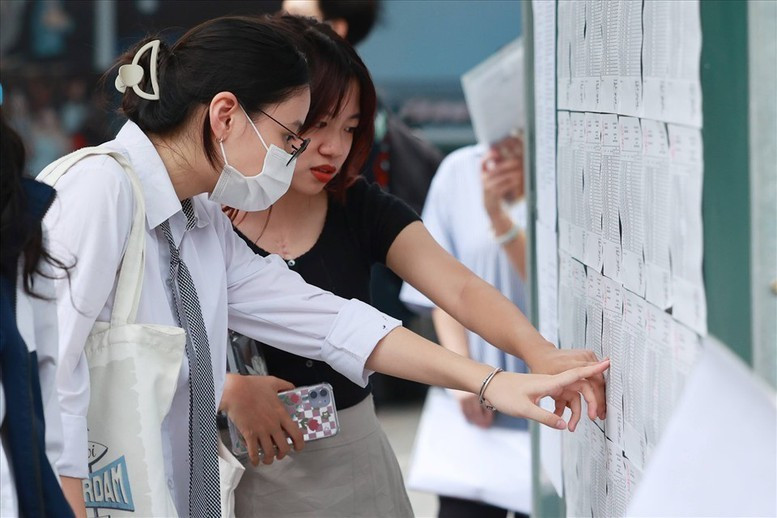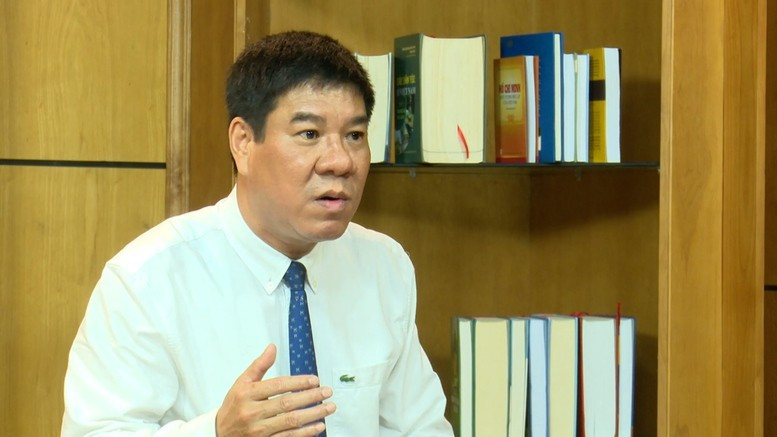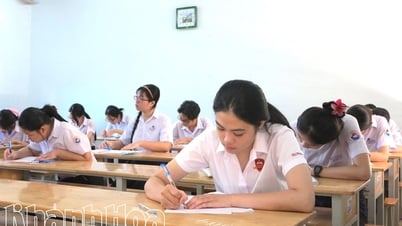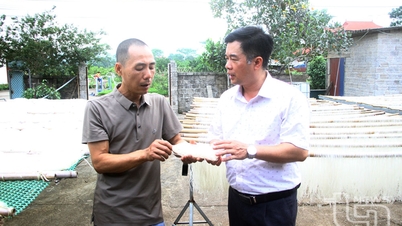This parallelism makes the organization of the exam more complicated, requiring localities, exam invigilators and inspectors to have a firm grasp of the key differences between the two programs, especially in the stages of printing and copying exam papers, arranging exam rooms, exam time, items allowed in the exam room, etc. If not understood and applied correctly, mistakes can easily occur, directly affecting the rights of candidates.

Some points to note in organizing the exam
According to Director of the Department of Quality Management ( Ministry of Education and Training ) Huynh Van Chuong, the first and most important difference lies in the printing of multiple-choice test questions.
With the 2006 General Education Program, each examination room is required to have 24 exam codes, printed separately to ensure differentiation and prevent cheating. This means that each examination room needs to print 4-5 A4 sheets for each candidate, requiring a large number of prints and a more complicated sealing process.
Meanwhile, with the 2018 General Education Program, the exam is designed in a new direction: Each exam room has only one exam code, corresponding to the personalized exam for each student. All are printed on both sides of an A3 sheet, saving paper, simplifying the exam distribution process and making it easy to control.
This new feature significantly reduces the burden of printing and copying the exam papers, especially in localities with a large number of candidates. However, exam supervisors need to be well trained to avoid confusion between the two forms of printing, avoiding the case of distributing the wrong exam papers or missing exam codes according to the program.
Not only are the exam questions different, the regulations on attendance time and the way the combined exam is organized are also clearly distinguished:
With the 2006 General Education Program, candidates only take one of the three subjects in the Natural Sciences or Social Sciences group. Therefore, candidates only need to enter the exam room 10 minutes before the subject they are taking the exam for.
With the 2018 General Education Program, students must take all three subjects in the combined exam. They must be present from the beginning of the exam, sit in the waiting room, and are not allowed to enter or exit the exam room at will during the exam.
This difference, though small, has a big impact on human resource arrangement, supervision time and candidate control, especially in distributing questions, collecting papers and ensuring exam safety.
One technical but easily overlooked note is about bringing the Geography Atlas into the exam room:
Candidates taking the 2006 General Education Program exam are allowed to bring an Atlas, as was required many years ago.
Candidates taking the 2018 General Education Program are not allowed to bring an Atlas, because the new exam requires map reading and understanding skills, not just simply looking up information.
If the invigilator does not understand and implement correctly, allowing or prohibiting the wrong person from bringing the Atlas will violate the exam regulations and may directly affect the results and rights of the candidates.

Never use 'one rule for both programs'
Director Huynh Van Chuong affirmed: "The exam regulations for the 2006 General Education Program and the 2018 General Education Program are separate and absolutely cannot be used interchangeably. If the regulations are violated, the handling will be wrong."
In reality, many exam supervisors in localities, due to unfamiliarity with the 2018 General Education Program, easily apply old exam organization practices. This poses a potential risk of being sued, affecting the entire exam results if the process is handled incorrectly.
The Ministry of Education and Training has issued two complete sets of guidelines, clearly distinguishing each step and each form for each program. All exam staff must be 100% trained and have their abilities tested before being assigned tasks.
With more than 1,127,000 candidates, this year's high school graduation exam is the largest ever. This requires the organization of the exam to be absolutely precise, clear in responsibilities, in accordance with regulations, without subjectivity or mistakes.
The Department of Quality Management emphasized: Every locality must review the entire exam organization process, arrange personnel suitable for each candidate's study program, and avoid mechanical application, leading to unfortunate errors.
Distinguish clearly to maintain strict exam discipline
The parallel existence of twoeducational programs is inevitable in the transition period. However, this also places very high demands on the management capacity and implementation responsibility of each Department of Education and Training and each exam officer.
It is impossible to allow the exam to be conducted according to the new program but using the old process. Even a small mistake can lead to big consequences if not controlled promptly.
And above all, the high school graduation exam is not only a tool for final assessment, but also a foundation to ensure fairness in university and college admissions. Organizing the exam seriously is the way to protect the rights of learners and maintain the trust of society in the national education system.
Source: https://baohatinh.vn/ky-thi-tot-nghiep-thpt-2025-tranh-nham-lan-khi-to-chuc-thi-post289245.html






























![[Photo] General Secretary To Lam receives Korean Ambassador to Vietnam](https://vphoto.vietnam.vn/thumb/1200x675/vietnam/resource/IMAGE/2025/6/6/a0765b7543784cbcbfe4755b67d43ab4)
![[Photo] President Luong Cuong works with Hung Yen and Thai Binh Provincial Party Committees on implementing Resolution of the 11th Central Conference, 13th tenure](https://vphoto.vietnam.vn/thumb/1200x675/vietnam/resource/IMAGE/2025/6/6/127b735d2761484d81dcee0d7725a25b)



























































![[OCOP REVIEW] Tu Duyen Syrup - The essence of herbs from the mountains and forests of Nhu Thanh](https://vphoto.vietnam.vn/thumb/402x226/vietnam/resource/IMAGE/2025/6/5/58ca32fce4ec44039e444fbfae7e75ec)










Comment (0)